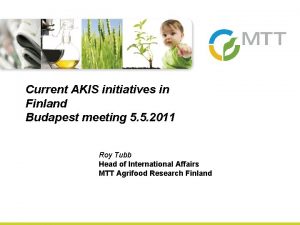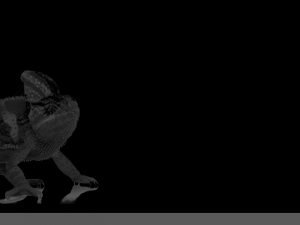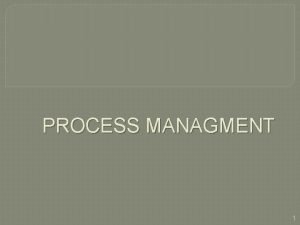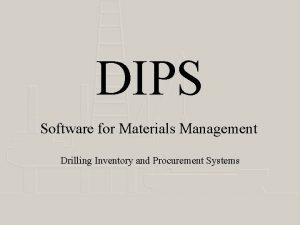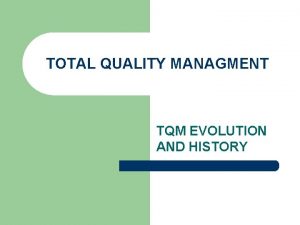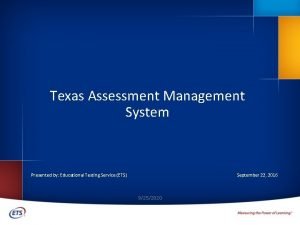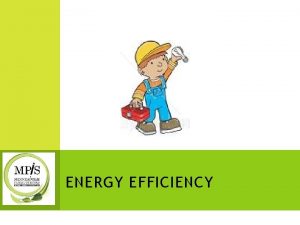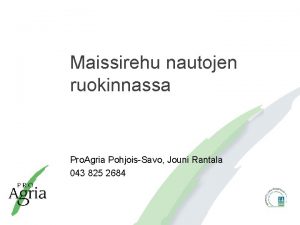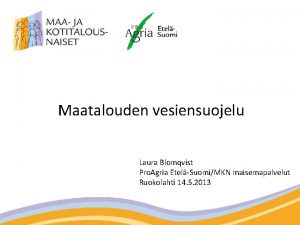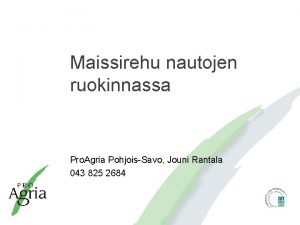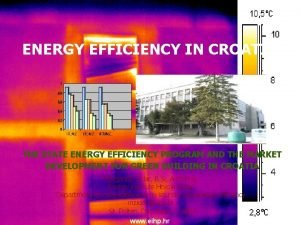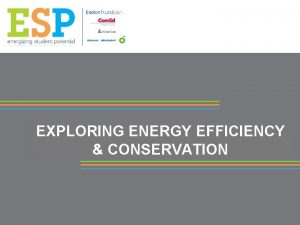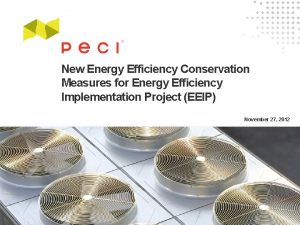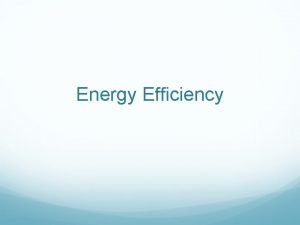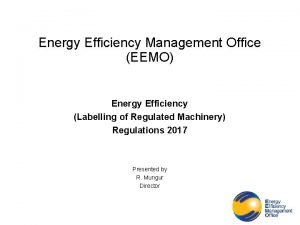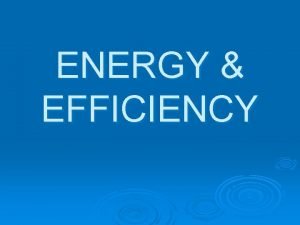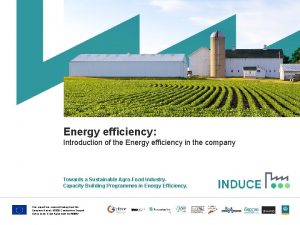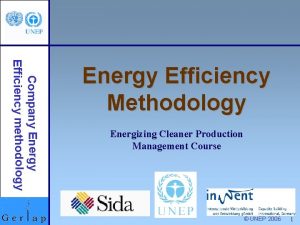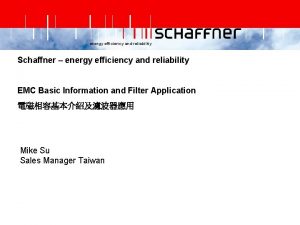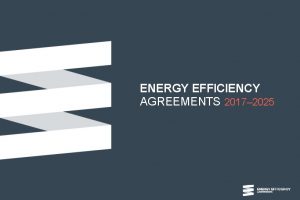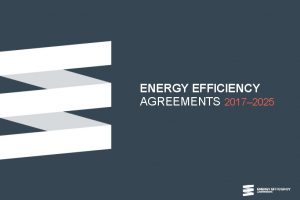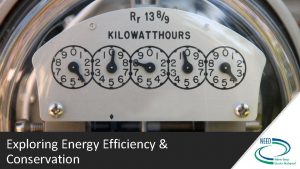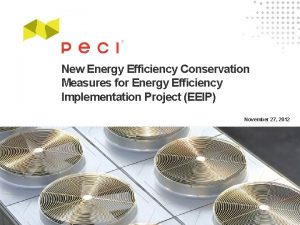ENERGY EFFICIENCY MANAGMENT IN AGRIA S A Presented























- Slides: 23

ENERGY EFFICIENCY MANAGMENT IN AGRIA S. A. Presented by: Nuridin Kisyov “Workshop on Energy Efficiency Management in Chemical Industry Sector” Thessaloniki, Greece 02. 06. 2014

WHO WE ARE & WHAT WE DO: • We are the only Bulgarian producer of plant protection products on a chemical basis • We offer a wide range of products for control of the main groups of insects, weeds, fungal and bacterial diseases in agricultural crops • Our products are based on: Ø Ø Ø ZINEB MANCOZEB CYMOXANIL PROPAMOCARB DIFLUBENZURON GLYPHOSATE and many more active ingredients 2

MAIN ACTIVITIES Ø PRODUCTION Ø IMPORT AND EXPORT Ø R&D Ø REGISTRATION Ø WAREHOUSING AND TRANSPORT Ø USERS TRAINING FOR PROPER USE OF PPP Ø WASTE MANAGMENT 3

AGRIA’s MARKETS: 4

OUR CARE+ EXPERIENCE • In 2008 CEFIC initiated CARE+, an European project aimed at supporting chemical SMEs in improving their energy efficiency. The initiative was funded and supported by the European Commission within the framework of “Intelligent Energy Europe”. The project officially started on 1 October 2008 and lasted until 30 March 2011. • Agria was invited by the Bulgarian Chamber of Chemical Industry to join the consortium and participate as a pilot enterprise in Bulgaria. • As a target enterprise we had to test the energy efficiency tools developed under CARE+: - Energy Efficiency Self Audit Guide - Self Audit Excel Sheets - Energy Efficiency Best Practice Manual • As a result we had the opportunity to: - analyze the company’s energy performance; - identify the energy efficiency measures and possible energy savings; - plan short- and long term investments; estimate the cost and possible long term payoff. 5

CARE+ step by step approach We have been provided not only with a powerful methodology combined with the right working tools but also with highly professional guidance and technical support by the consultant “Energy efficiency systems” LTD and Bulgarian Chamber of Chemical Industry. 6

Audit preparation 1. How much the energy costs accounts in our total cost? 2. What is our major energy consuming application? 3. What needs to be done, when and by whom? 7

Matrix strengths and weaknesses of energy management Commitment and energy policy Roles and responsibilities: Specific objectives and projects: Monitoring of energy efficiency: 5 Management is actively engaged in energy policy Energy management is fully integrated in the enterprise Investing in energy efficiency is assessed in LCA, the reduction of CO 2 is business purpose 4 An official policy, but without active involvement of management Clear accountability immediate managers Using the same evaluation Monthly monitoring and reporting criteria as in other projects based on initial reporting, without to reduce costs connection to the Enterprise 3 Unaccepted policy Some delegation of responsibilities, but the participation of direct management is not clear Measures requiring low or average costs are considered if they have a short period of return Individual monthly monitoring of a limited number of individual devices, reporting of expenditure by individuals 2 Unwritten set of guidelines Informally and sporadically Good targets for the organization of production and only low-budget initiatives Limited episodic tracking energy consumption and verification of invoices 1 No explicit policy No delegation of responsibilities No specific targets and investments in improving energy efficiency No reporting of energy consumption Comprehensive monitoring of energy performance, fully integrated with the daily operations 8

Checklist for Energy Management Check the current level of information on energy consumption and energy costs 1 • Available information on energy consumption and the cost of purchasing energy • Information reporting energy consumption total and by kind Check where your energy information system needs improvement 2 • Technical documentation of the object "as it built" • Procedures for calibration and maintenance of measuring devices Check Your current level of Energy Management 3 • • Involvement of management Energy Policy Roles and responsibilities Energy efficiency actions 9

Information gathering TABLE 1 - GENERATORS OF HEAT NAME TYPE NUMBER CAPACITY, t/h Steam boiler 1 – mono tube with parallel flow, horizontal STEAM 2500 1 2, 5 Steam boiler 2 – mono tube with parallel flow, horizontal STEAM 2500 1 2, 5 Steam boiler 8 - mono tube with parallel flow, vertical STEAM 600 1 0, 6 Gas burner Weishaupt RG 140/2 1 Max. 3450 k. W Min. 500 KW 10

Energy consumption TABLE 2 - ANNUAL CONSUMPTION OF THE YEAR 2008 Energy Type of Energy № Name 1. Natural gas 2. Electricity Annual consumption t/year TOTAL: Equivalent primary energy Nm 3/year MWh primary/ year GJ primary/year 1 447 000 13 460 48 764 4 587 11 470 41 287 18 047 24 930 90 051 1 447 000 11

Energy consumption SPECIFIC ENERGY CONSUMPTION FOR 3 YEARS 17 000 16 100 15 2006 2007 2008 12

ANALYSIS AND PROPOSAL № Subsystems and units, objects of auditing Measures required Assessment 1. Measurement and control of energy flows Good with potentials development Introduction of energy monitoring 2. Energy Management System Good with potentials development Structures and functions of energy management 3. Combustion systems Good, but without heat utilization of the stack heat Installation of economizer 4. Heat distribution system Good No 5. Electricity distribution systems Very good No 6. Compressed air and cooling systems Very good No 13

ANALYSIS AND PROPOSAL № Subsystems and units, objects of auditing 7. Pumps and fans 8. Technology processes and systems Good Replacement of contactors and thermo protectors 9. Production machines and aggregates Good with potentials for development No 10. Lighting systems Good-new efficient lighting in administration building and part of production premises Replacement of lighting in rest part of production premises 11. HVAC systems Good No 12. Building shell Good Replacement of 14 windows Assessment Very good Measures required No

TABLE 3 - Cost/benefit analysis of the proposed energy saving measures MEASURE TYPE OF ENERGY MWh/ year BGN/years t/year 40 337 375 11 076 33 000 3 92, 7 250 625 7 384 18 460 22 000 55 000 3 3 301, 7 394, 4 47 825 445 11 22 000 1, 96 109, 9 TOTAL 47 825 445 11 22 000 1, 96 109, 9 347 16 655 25 400 1, 53 418, 5 225 6 646 900 0, 1 55, 6 150 375 4 431 11 077 600 1 500 0, 1 181, 0 236, 6 1 792 57 403 103 900 1, 7 1 160, 0 Natural gas Heat generation measures - installation of economizer Natural gas Electricity TOTAL Other - introduction of Natural gas 24 202 structures and functions of energy management Electricity TOTAL 24 202 All measures CO 2 Emission Reduction Nm 3/ year Introduction of energy monitoring and control system Electricity saving measures - VSD, efficient lighting, new contactors and new thermo protectors ANNUAL SAVINGS Pay Investments back required period TOTAL 72 027 15

TOTAL ANNUAL ENERGY SAVINGS 1792 MWh/year 6452 GJ/year SAVINGS BY TYPES OF ENERGY, % 1. Natural gas 7. 8 2. Electricity 6. 5 TOTAL SAVINGS, % 7, 2 16

An assessment of the energy efficiency measures Replacement of windows in industrial buildings The specific objective of improving energy efficiency by this measure was to reduce the consumption of natural gas during the heating season. As a result of the replacement of depreciated old wooden windows by new frames of "aluminum glazing“ type, it was reported a reduction in the specific energy consumption per tone of product 0. 033 GJ / t and a decrease in the energy 17 efficiency index (EPI) 0. 21%.

An assessment of the energy efficiency measures Repair and replacement of lighting in industrial and administrative facilities As a result of the implementation of this measure related to the installation of energy efficient lighting, it was reported a reduction in the specific energy consumption of 0. 02 GJ / t and contribution to the decrease of the indicator for energy efficiency of 0. 17%. 18

B E Y O N D C A R E With the experience and confidence based on the successfully implemented project CARE+, AGRIA performed in 2013 a new energy audit. The new audit took place within the framework of Energy Efficiency and Green Economy Programme, a joint initiative between the Bulgarian Ministry of Economy and Energy and the European Bank of Reconstruction and Development (EBRD). This initiative is a part of the Operational Programme “Development of the Competitiveness of the Bulgarian Economy” 2007 -2013 aimed to promote sustainable energy solutions for SMEs. 19

B E Y O N D OBJECTIVE Ø Improve the efficiency and productivity of Agria's granulation and drying process. INDICATOR Annual consumption, k. Wh Costs, BGN Annual production, kg Specific consumption of energy, k. Wh/kg C A R E 2010 2011 2012 7 562 357 7 439 433 6 209 976 749 070 786 267 718 706 7 125 894 7 525 007 6 449 501 1, 06 0, 99 0, 96 20

B E Y O N D C A R E OBJECTIVE Ø Improve the efficiency and productivity of Agria's granulation and drying process. 1 828 100 EUR 50% AGRIA S. A. EU FUNDS 21

B E Y O N D C A R E Energy savings, financial performance, and reduction of CO 2 emissions after implementation of the project Reduction of specific energy ESR – Energy Saving Ratio Annual Energy Savings Annual Financial Savings Reduction of CO 2 emissions 1440 k. Wh/tone 35, 50 % 5 040 274 k. Wh/year 424 832 BGN/year 2000 Tones CO 2/year ü Increase of the volume of production by 53. 8 % due to the purchase of new equipment and modern technology ü Reduction of production costs ( up to 15 %) due to reduced natural gas costs ü An increase of sales by about 30 -35 % ü Put into production of new types of granular fungicide products 22

Thank you for your attention Presented by: Nuridin Kisyov phone: +359 32 273 529 email: n. kisyov@agria. bg www. agria. bg “Workshop on Energy Efficiency Management in Chemical Industry Sector” Thessaloniki, Greece 02. 06. 2014
 Agria tohjulstraktor
Agria tohjulstraktor Karjakompassi
Karjakompassi Renewable energy and energy efficiency partnership
Renewable energy and energy efficiency partnership Allocative efficiency and productive efficiency
Allocative efficiency and productive efficiency Productively efficient vs allocatively efficient
Productively efficient vs allocatively efficient Productively efficient vs allocatively efficient
Productively efficient vs allocatively efficient Web content managment
Web content managment Process managment
Process managment Dips software
Dips software User managment
User managment Cherwell managment
Cherwell managment Records managment 201
Records managment 201 Bus topology
Bus topology Importance of resource management
Importance of resource management Pragwater
Pragwater Vehicle leasing software
Vehicle leasing software What is resource managment
What is resource managment Relevant ones
Relevant ones Tqm history
Tqm history Total quality management system
Total quality management system Texasassessment management system
Texasassessment management system Führerscheinkontrolle poolfahrzeug
Führerscheinkontrolle poolfahrzeug Energy energy transfer and general energy analysis
Energy energy transfer and general energy analysis Energy energy transfer and general energy analysis
Energy energy transfer and general energy analysis

